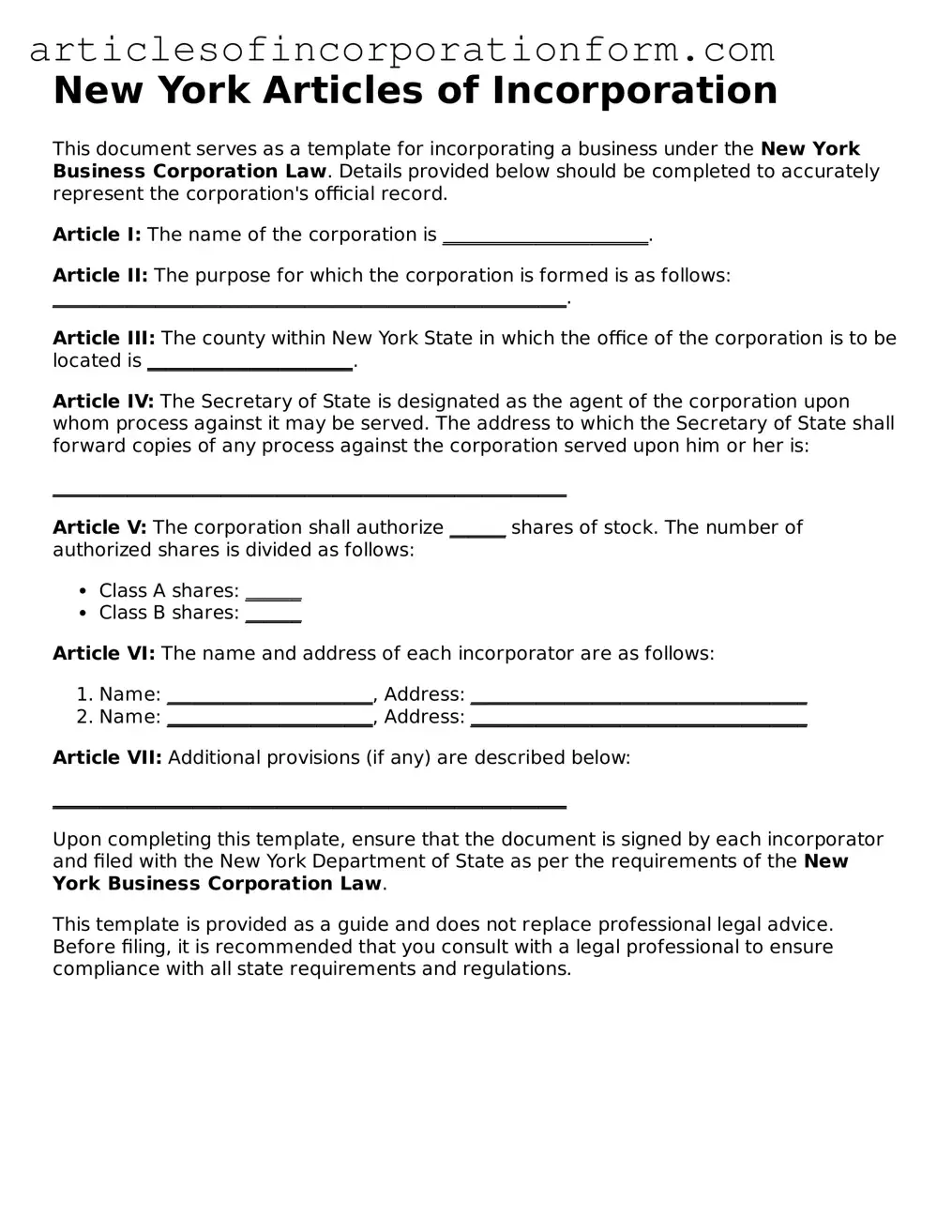What are the Articles of Incorporation in New York?
Articles of Incorporation are a document that establishes a corporation's existence within the state of New York. This legal document is filed with the New York Department of State and includes information such as the corporation’s name, purpose, office address, registered agent, and information about shares and incorporators.
How do I file the Articles of Incorporation in New York?
Filing the Articles of Incorporation in New York involves preparing the document with all required information and then submitting it to the New York Department of State, either online, by mail, or in person. The filing requires a fee, which varies depending on the type of corporation being established. It’s recommended to check the most current requirements and fees on the New York Department of State’s website or to consult with a legal expert.
Can I file the Articles of Incorporation online?
Yes, you can file the Articles of Incorporation online in New York through the Department of State's website. This convenient option allows for a more straightforward and faster filing process. However, you must ensure all required information is accurately provided to avoid potential issues or delays.
What information is needed for the Articles of Incorporation?
The Articles of Incorporation in New York require you to provide the corporation’s name, the county within New York where the corporation will be located, the corporation's purpose, the total number of shares the corporation is authorized to issue, the name and address of the registered agent, and the names and addresses of the incorporators.
What is the processing time for the Articles of Incorporation in New York?
The processing time for the Articles of Incorporation in New York can vary depending on the volume of filings and the method of submission. Online filings are typically processed faster than mail or in-person submissions. It usually takes a few business days for online filings, while mailed documents may take several weeks. For the most current processing times, check with the New York Department of State.
Is there a filing fee for the Articles of Incorporation in New York?
Yes, there is a filing fee for submitting the Articles of Incorporation in New York. The fee varies depending on the type of corporation being formed and other factors. It’s important to verify the current fee structure on the New York Department of State’s website or by contacting them directly as fees may change.
How can I ensure my Articles of Incorporation are approved?
To ensure your Articles of Incorporation are approved in New York, double-check that all required information is accurately provided and that your corporation's name adheres to New York state regulations. Additionally, paying the correct filing fee and submitting to the appropriate department are crucial steps. Seeking legal advice or assistance can also help navigate the process smoothly and reduce the risk of rejection.
